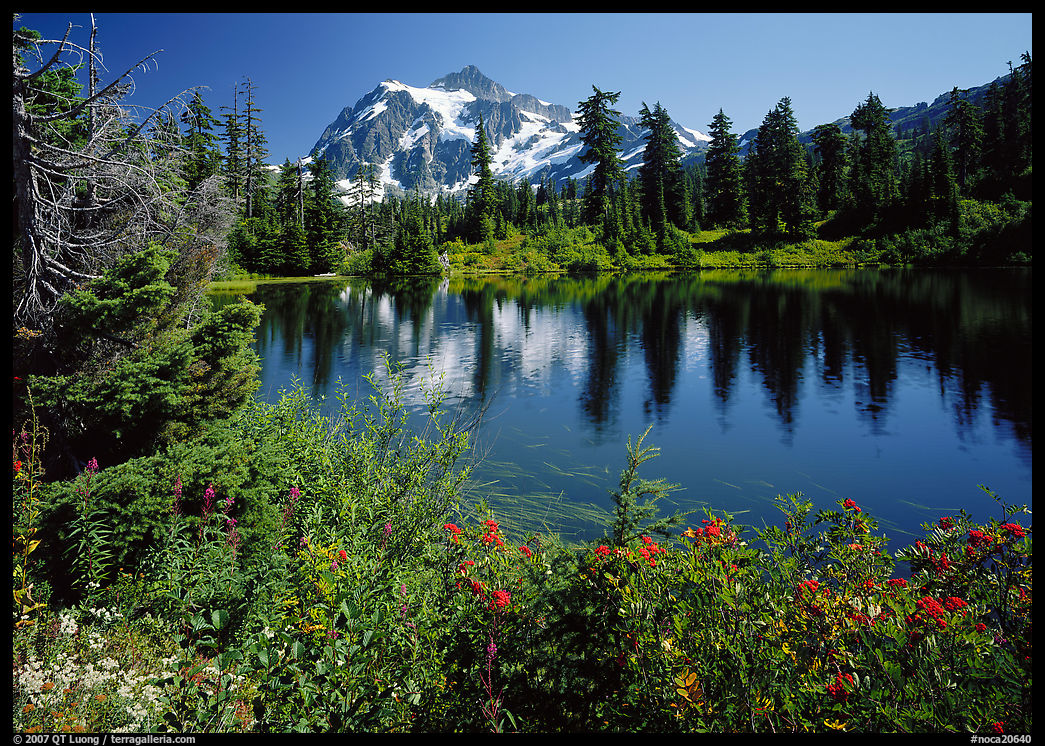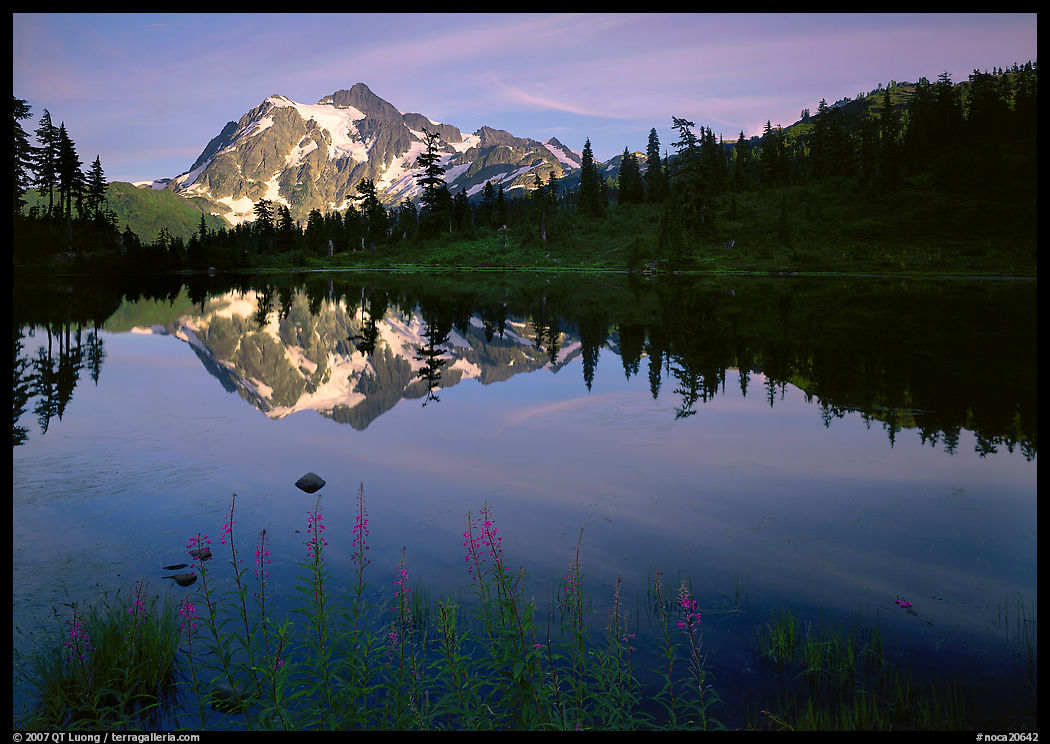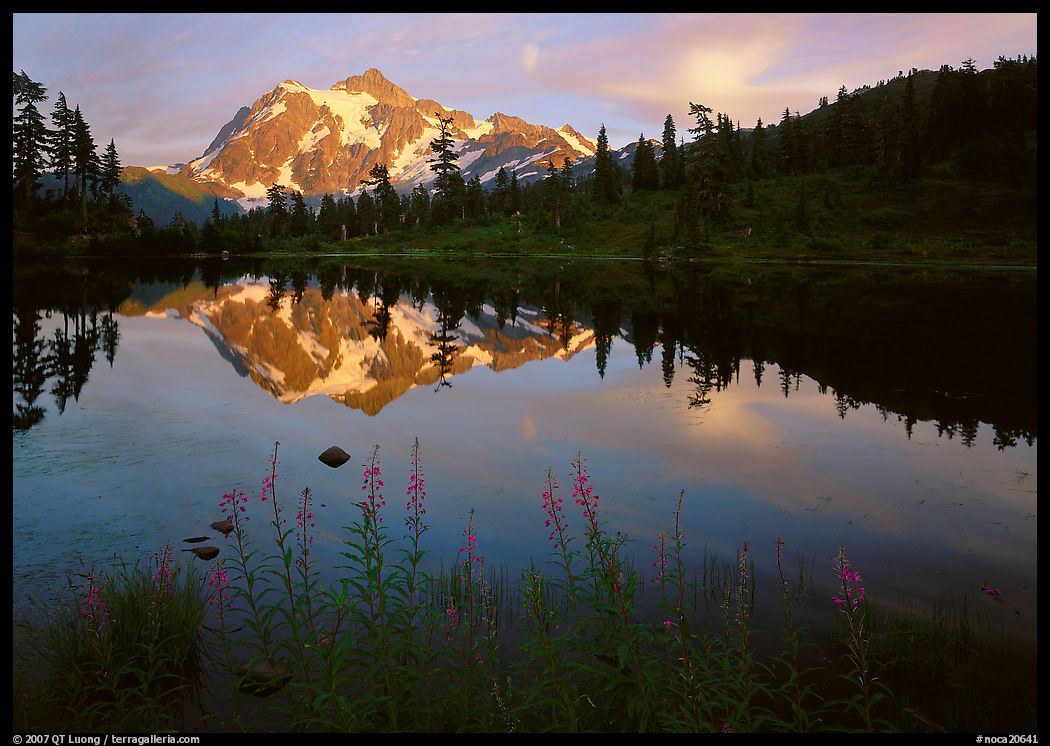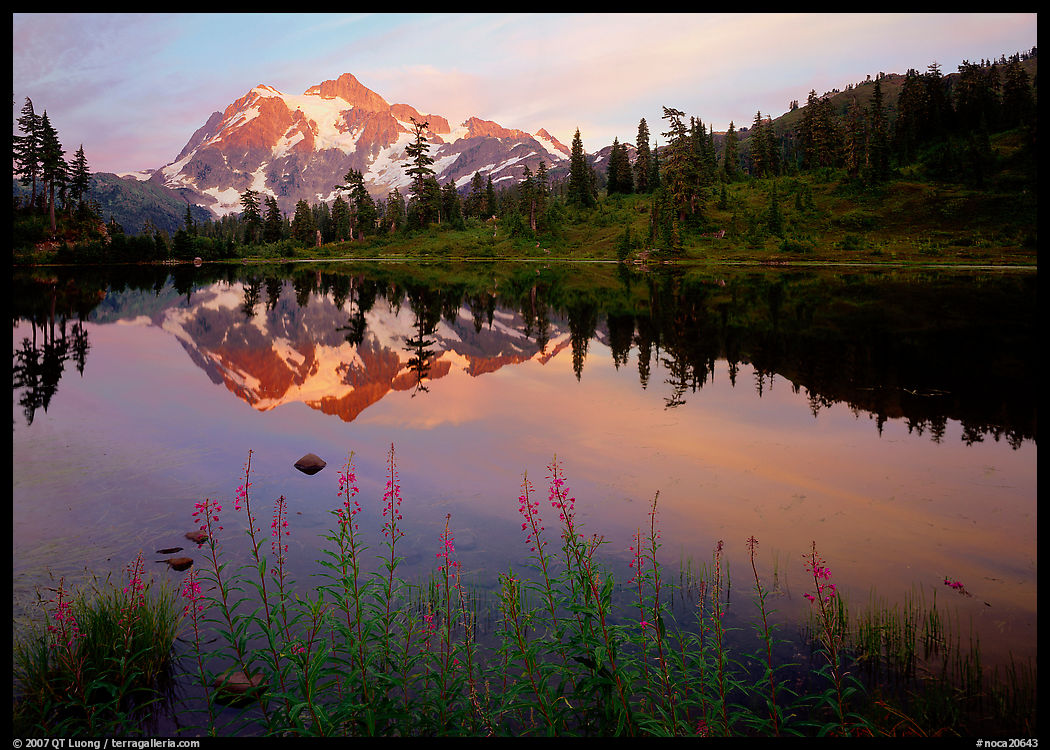Steps behind the image: Mt Shuksan
8 Comments
As the light progressed towards the evening, I improved the composition of a most iconic scene through foreground refinement. This installment in the series “Steps behind the image” differs from the previous ones as it was made of published images of an icon rather than digging into archives. I had released the images that led to the final, prefered image because they show the scene in a different light.
Despite preserving some of America’s most beautiful mountain landscapes, North Cascades National Park is the second least-visited national park in the continental U.S., behind the remote and roadless Isle Royale National Park. This is because the park itself is managed as a wilderness without facilities and almost no road access, accessible only to hikers, backpackers, and mountaineers. However, there are excellent views from developed and accessible areas adjacent to the park. None in the entire North Cascades National Park Service Complex is as iconic as the view from Picture Lake, located in the Mount Baker-Snoqualmie National Forest. Near the end of Mount Baker Highway (SR 542), on the west side of the park, a one-way loop circles a pond. The mountain reflected in the pond is Mount Shuksan, sometimes said to be the most photographed mountain in North America – there are other more plausible candidates.
From any point on the east shore of the lake, the view looks similar, and that may lead one to think that all photographs of the reflected mountain are essentially the same. However as is often the case, there are small details in craft that differentiate images. In particular, while the background remains essentially the same, every foot of shoreline offers something a bit different. It is often remarked that when you made an “intimate” photograph of a smaller scene, it is more personal because more unique. In a larger scene, the foreground component is that smaller scene, and you are presented with the additional challenge to connect it to the distant elements.

I first came to the site at midday. Technically, the picture was straightforward as everything was well-lit. Photographing with my large-format camera, instead of pointing the camera down, I shifted the image down to keep the trees parallel, and as usual, a bit of tilt helped render both foreground and mountain sharply. Feeling uninspired by the light, I didn’t work hard in selecting the foreground. I settled early for something with a lot of detail and color. It had several issues: quite busy, distracting bright areas in the left corner, some overlap with the mountain reflection, and a weak connection with the mountain in the background. However, it does capture the feel of midday with pleasant greens and blues.

There is more than Picture Lake in the area. Continuing a few miles to Artist Point at the end of SR 542 and hiking a short trail to the east toward Huntoon Point along the Kulshan Ridge leads to less common views of Mt Shuksan. After scouting around, I still returned to Picture Lake in the late afternoon because I felt there was more potential. Besides the ease of access, it is not iconic for nothing! By that time, the contrast between the sunlit mountain and the lake in the shade necessitated a few technical tricks. First, I had to use a graduated neutral density filter to balance the exposure. Then, as I suspected that the flowers might still turn out too dark, to bring out their color, I used a flash that I had to synchronize manually since like for the three other photos on that page, I was photographing with my large format camera. In metering the flash, I made sure to keep it dim enough that it would not look obvious or unnatural.
Most of my work was in improving the composition with a more deliberate choice of the foreground. After walking along the shoreline, I found one that was not only simpler but also connected with the mountain better, providing visual unity to the photograph. The tips of the flowers form a triangular shape that rises steeply from the left and more gradually from the right. This shape echoes the shape of the mountain. The vertical lines of the flowers, well detached against the water, echo that of the spruce trees, well detached against the brighter mountain. Having disparate image elements that visually relate to each rather than being simply juxtaposed brings cohesion to the photograph.

In the previous photograph, the shade in the lake area help bring out the reflection on the mountain, and also creates a separation in tone between the distant line of trees and the mountain, adding depth to the image thanks to another layer. However, the light on the mountain is so bright that those shaded areas appear dark. As the sunlight gets dimmer, the contrast is reduced. While I was waiting for that to happen, I refined the composition further by moving the camera by less than one foot. Small changes in camera placement can make a big difference! I included a little more of the flowers so that their visual mass balances the mountain better, and also echoed its shape more. I also reduced the overlap between the flowers and the rocks in the lake. By having the flowers and the mountain reflection create a frame around the middle rock, I transformed it into a unifying focal point for the entire image. I was now satisfied with the composition. The Treasured Lands exhibit project is horizontal. You could argue that a vertical composition cropping out the right might be stronger. However the shape of the flower tips wouldn’t complement the mountain’s as well, and there are also lines there that lead to the mountain.

The sunset light had illuminated the mountain beautifully in warm tones, but instead of calling it done, I decided to wait until dark to see if the light would not improve further past sunset time. Sometimes it does, and that was the case that evening. Fifteen minutes after sunset, the color is better. The overall softer contrast reveals the hues of the vegetation more vividly. The lake beautifully reflects the more saturated color in the sky. The reddish color of the alpenglow on the mountain matches that of the flowers better, contributing further to the cohesiveness of the photograph. I walked out satisfied that although there are countless images of the scene, I had applied myself enough to make maybe one of the more finely crafted examplars, and certainly the one I liked the best.


Thanks so much, QT, for such a detailed but easy-to-understand explanation of your thought processes and techniques behind such wonderful compositions. Best wishes, Paul
Thanks Paul, hope the ideas are useful to you.
Beautiful photo of Mt. Shuksan! Yes, I have been there too, by that very lake. I must tell you that my late husband, Patrick Goldsworthy, was a prime mover in efforts to establish the North Cascades National Park. He was a president of the North Cascades Conservation Counsel (NC3) at one time. I know that he would have loved seeing your images, if only in your book on the national parks, which I have. It’s easy to meet him by googling his name on your computer.
Best,
Christine
Thank you for bringing his legacy to my attention. There are quite a few persons with the same name, but a search for “Patrick Goldsworthy north cascades” zeros on this excellent account of his work:
http://www.northcascades.org/wordpress/in-memoriam/patrick-goldsworthy
Such a treasure trove of information and beautiful images! I find it captivating to learn how you look at a scene. It is a joy to come across this page of Mt Shuksan and links to many of your blogs. I will look forward to many, many hours spending time on your site. You have so much to offer.
Wishing you all the best,
Susan
Thank you for stopping by and for your kind words. There is indeed a lot of material on this blog since it has been going on regularly for a dozen of years. A good starting point is the link “Blog highlights” at the top.
It is such a coincidence that I came across your blog about Mt Shuksan. Two close friends are traveling from Los Angles to Bellingham WA in 10 days. I forwarded your info on Mt Shuksan to them.
While they are good hikers, having been to the base camp of Mt Everest, with limited time they more than likely will drive.
I was happy to learn from your blog that many of the roads in our national parks have vistas easily accessible from the road. For me, that is very inspirational. Thank you.
It is part of the National Park Service mandate to make (some of) the parks enjoyable to all. Make sure they don’t miss the link within the post!